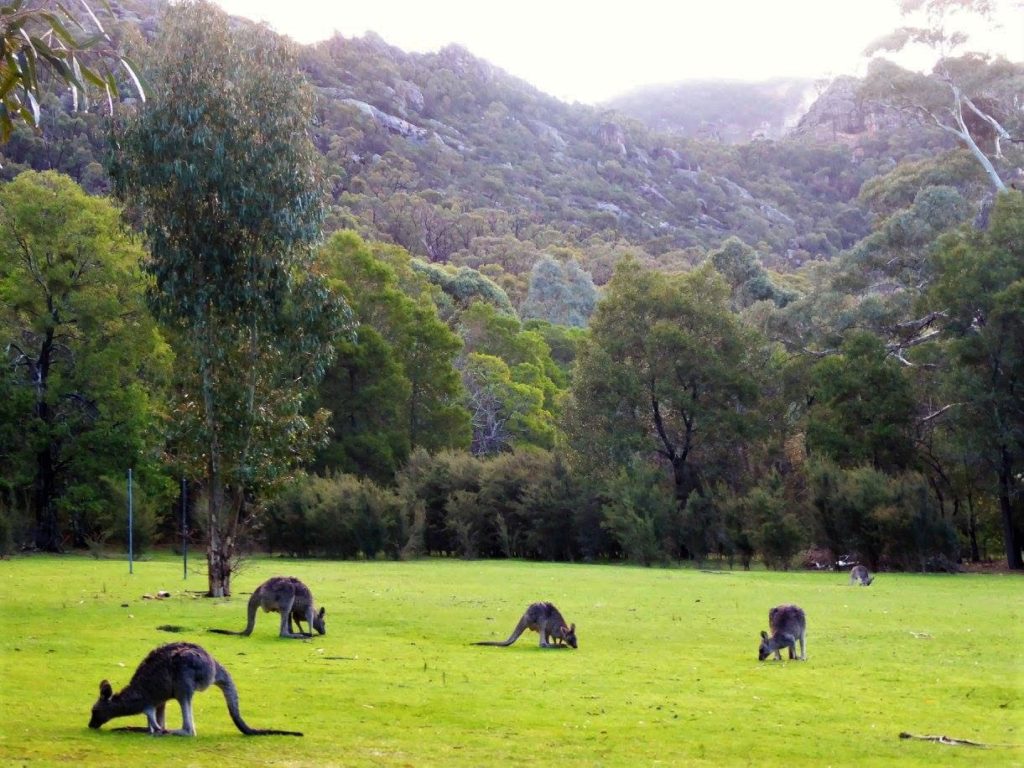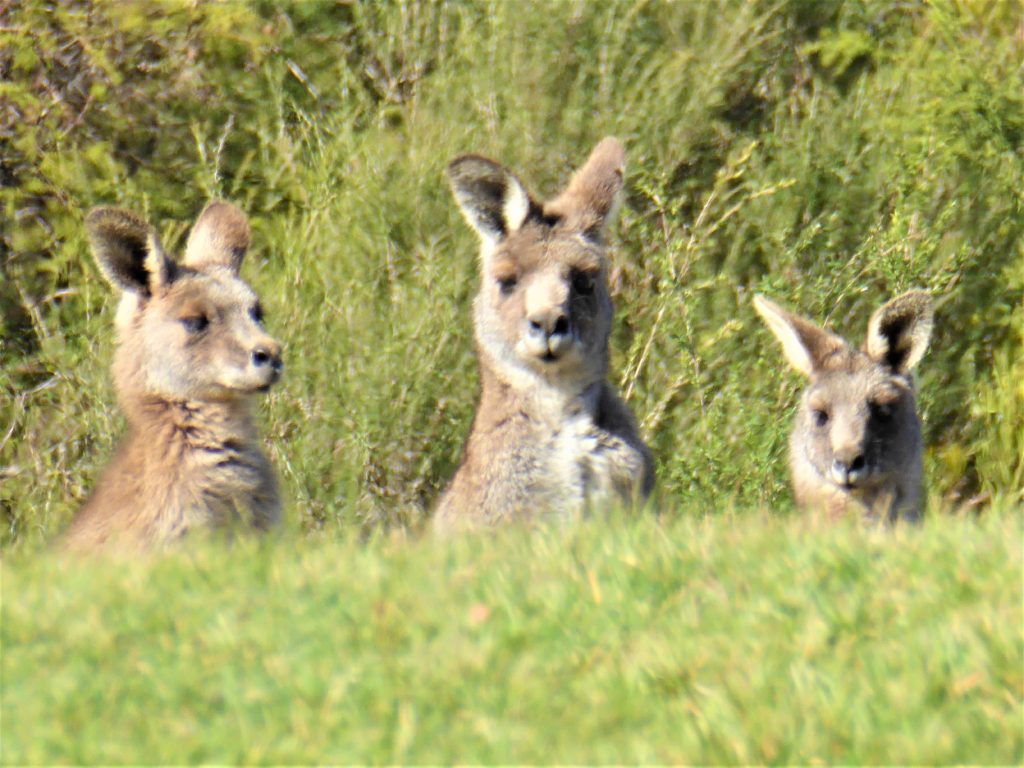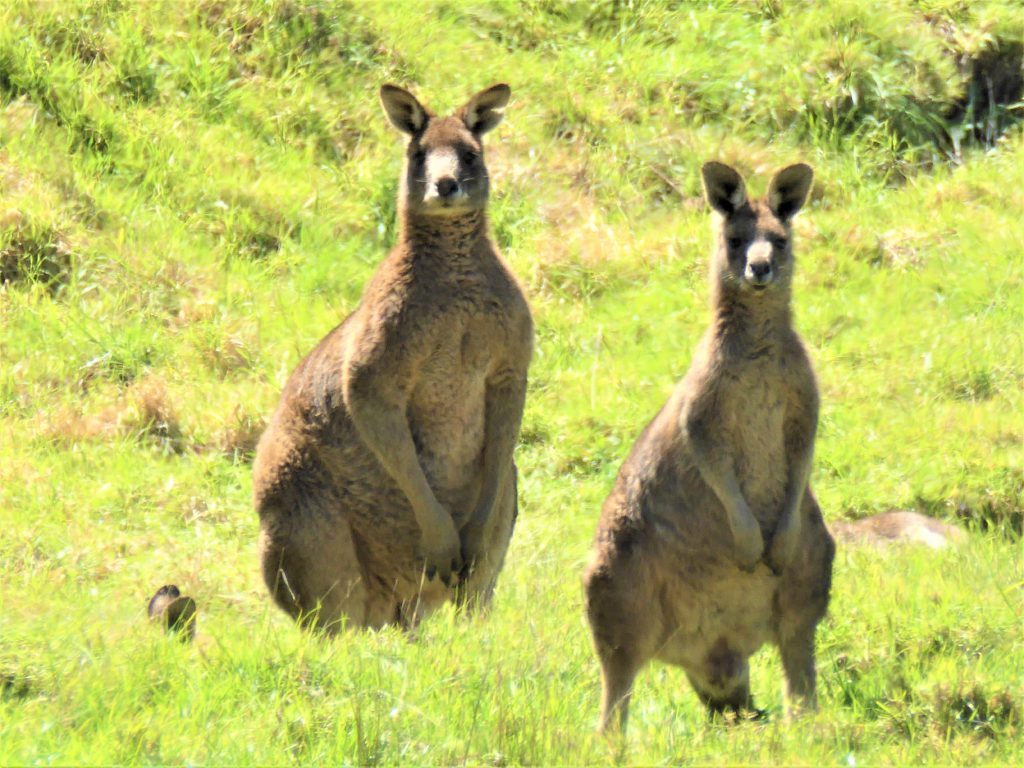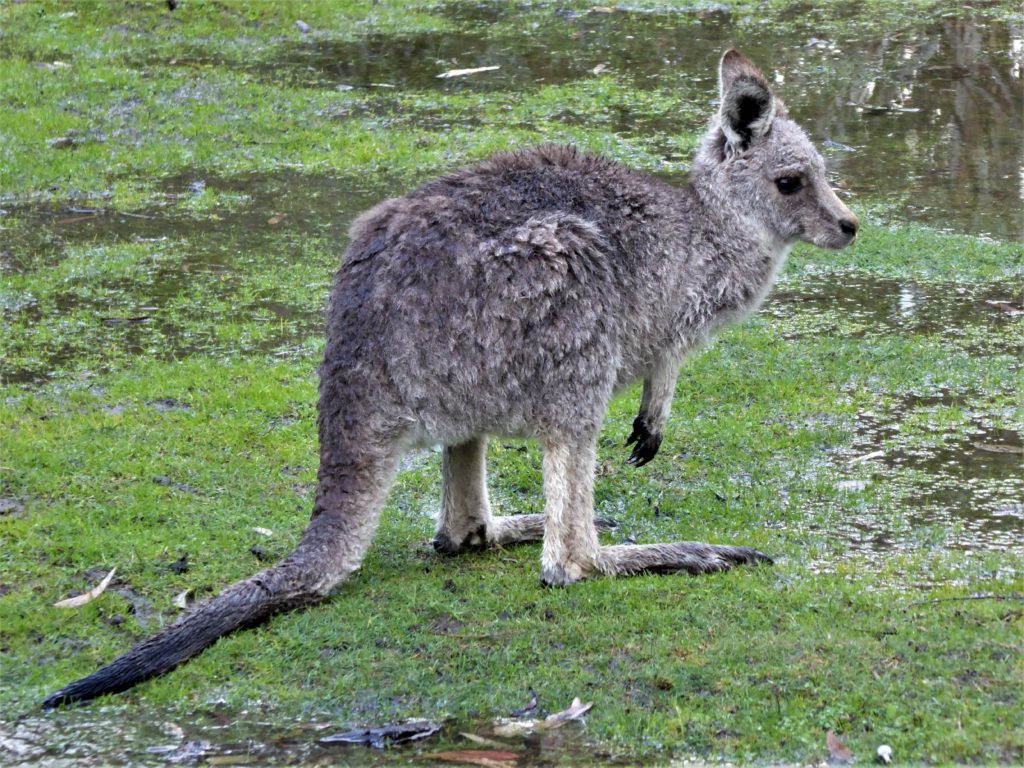Melbourne: Best Bushwalks for Kangaroos

As an American, I get it: you want to see kangaroos on your Australian vacation. After all, you won’t find these magical marsupials anywhere else in the world. But where can you find kangaroos in Australia? If you’re visiting Melbourne, you don’t have to go far.
Melbourne kangaroos
Here are some local options. Healesville Animal Sanctuary is popular day trip to get close to rescued animals in outdoor enclosures. You also can spot suburban kangaroos within Melbourne in many of the city’s parklands within a couple hours of sunrise and sunset. And international travelers have good odds at spotting a huge mob of kangaroos at the fringe of Melbourne’s Tullamarine Airport. (Make sure to scan the grassy hillsides as soon as your cab or Skybus pulls onto the highway.) But these experiences don’t compare with spotting wild kangaroos on a hike–or, as the Australians say, “bushwalk.”
Here are some of the best bushwalking destinations within a few hours of Melbourne that give hikers a good chance to see kangaroos in the wild:
Mornington Peninsula kangaroos

The Mornington Peninsula (60-90 km southeast of Melbourne) is best known for its beach houses, chardonnays, and pinot noirs. But hikers can spot mobs of kangaroos in small pockets of remnant bushland across the peninsula:
- Greens Bush is where many Melbournians take their overseas guests to see wild kangaroos. Try the Greens Bush to Highfield Walk (10 km) to spot large mobs of Eastern Grey Kangaroos. For an all day bushwalk through wine country and kangaroo country, go for the Two Bays Walk (see map) from Dromana to Cape Schanck (28 km, shuttle required).
- You can also see kangaroos along the popular Bushranger Bay Walking Track. Start from the Boneo Road Carpark, and keep your eyes peeled for kangaroos near the creek and grassy hillsides about 1-2 km into the walk. This scenic hike continues to Bushranger Bay and then on to Camp Schanck Lighthouse, where you can look for kangaroo trails while enjoying the coastal views of Bass Straits.
Sugarloaf Reservoir Circuit
Sugarloaf Reservoir Park (1 hr NE of Melbourne’s CBD) may not constitute “bushland” since it’s on the fringe of suburban Melbourne. But the 15 km (10 mile) circuit walk around Sugarloaf Reservoir is a nice route for a workout–and kangaroos. This is probably the closest hike to see kangaroos in greater Melbourne. Time your walk for early or late in the day for your best chance to spot kangaroos, wallabies, and other wildlife.

Great Ocean Walk & Tower Hill
The Great Ocean Road (2.5-3 hrs SW of Melbourne) is Australia’s famous ocean drive. For me, the Great Ocean Road does not compare with the Great Ocean Walk–the 105 km walking track that traverses miles of ocean views, coastal heath, and eucalypt forest that the Great Ocean Road only skims.
The Great Ocean Walk is arguably the best hike for spotting koalas in Australia. However, it also had the biggest kangaroos that I saw in my two years living in Melbourne. You probably won’t see ‘roos along the coastal and forest stretches of the track. But you’ve got a chance to see some absolute brutes above Johanna beach as the trail heads west into the grasslands. See below–the bloke on the left was taller than me:

If you drive the Great Ocean Road or hike the Great Ocean Walk, take a short side trip to Tower Hill Wildlife Reserve for easy wildlife spotting. Tower Hill (west of Warrnambool) is a wildlife reserve and Aboriginal heritage area housed within the crater of a dormant volcano. The park offers a series of hiking loops through restored bushland where you can spot kangaroos alongside koalas, emus, wallabies, and echidnas. (Emus and koalas may be the biggest draws at Tower Hill.) It’s a bit of a stretch to call Tower Hill a “bushwalk.” But hikers can piece together a series of easy loops into a 2-3 hour walk where you’re virtually guaranteed to see kangaroos, emus, and koalas.
Halls Gap & Grampians Nat’l Park
Grampians National Park (3 hrs northwest of Melbourne) has the best day hikes in Victoria, if not Australia. Head for the town of Halls Gap and expect heaps of kangaroos. They’re everywhere. You may be tempted to just wander around the town, snapping photos of kangaroos until your battery dies. But don’t forget the hikes!
- The Pinnacle is the park’s most popular day hike. It’s an accessible and moderate track with interesting rock features and scenic overlooks of Halls Gap. Look down from exposed parts of the trail to spot grazing kangaroos below–they will appear as dark U-shapes (as they curl their long tails for balance while grazing).
- Mount Rosea (10 km) is another excellent day hike from Halls Gap.
Look for kangaroos and emus in meadows on your drive to and from the Mt. Rosea trailhead. This out-and-back hike begins and ends in the scrub of a stringy-bark forest. Once you climb out of the trees, however, you’ve got rugged, cairn-to-cairn hiking across exposed rock, boulder fields, and cliffs. This is classic Grampians high country. After your hike, return to Halls Gap for a celebratory beverage, where you may easily spot dozens of kangaroos without leaving your campsite or cabin.

tips for spotting kangaroos
Kangaroos are widespread in Australia. Due to destruction of their natural habitat, however, they are often concentrated in small areas. Here are some basic tips for when and where to look for kangaroos on your Australian bushwalks and day hikes:
- Timing is everything. Focus on morning and evening hikes to spot kangaroos. They’re generally pretty dormant during the middle of the day.
- Bushland. Kangaroos will stack up in pockets of remnant bushland and restored bushland. Find native vegetation, and you’ll often find heaps of kangaroos.
- Grasslands. If you can’t find native bush, look for red kangaroos near grassy areas. Otherwise, kangaroos are adaptable, so you can find them in varied habitat where there’s access to water and cover.
- Kangaroos live in large groups called “mobs.” If you see one kangaroo, keep looking–there could easily be dozens more if you scan the nearby cover.
- Kangaroos may be badass kickboxers, but they’re generally docile animals (like deer). So, forget the viral videos and When Animals Attack–as long as you (or your pets) don’t corner them or harass them, you won’t be boxing any kangaroos on your Australian hike.
